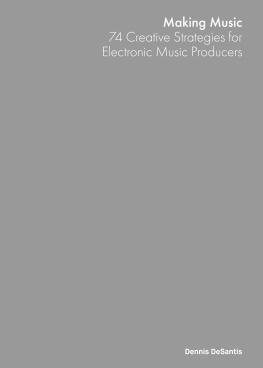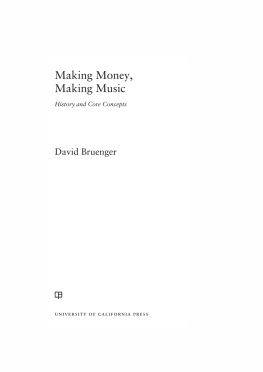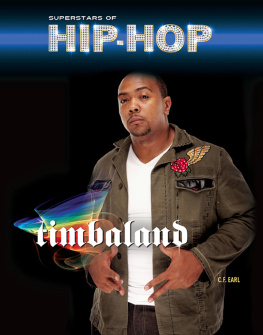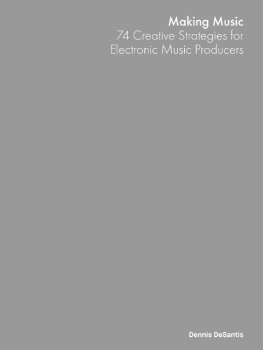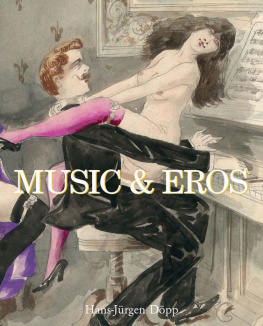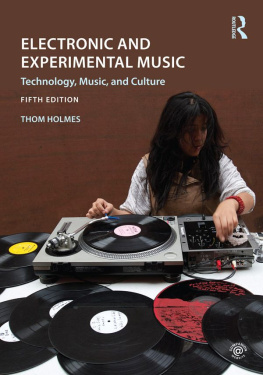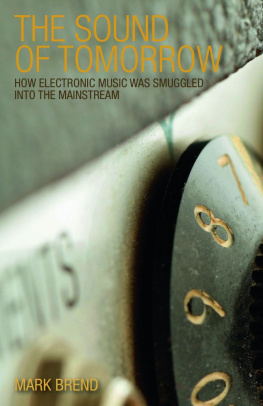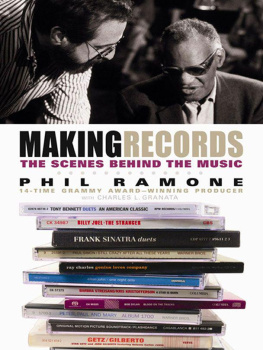Dennis DeSantis - Making Music: 74 Creative Strategies for Electronic Music Producers
Here you can read online Dennis DeSantis - Making Music: 74 Creative Strategies for Electronic Music Producers full text of the book (entire story) in english for free. Download pdf and epub, get meaning, cover and reviews about this ebook. year: 2020, publisher: Ableton AG, genre: Romance novel. Description of the work, (preface) as well as reviews are available. Best literature library LitArk.com created for fans of good reading and offers a wide selection of genres:
Romance novel
Science fiction
Adventure
Detective
Science
History
Home and family
Prose
Art
Politics
Computer
Non-fiction
Religion
Business
Children
Humor
Choose a favorite category and find really read worthwhile books. Enjoy immersion in the world of imagination, feel the emotions of the characters or learn something new for yourself, make an fascinating discovery.
- Book:Making Music: 74 Creative Strategies for Electronic Music Producers
- Author:
- Publisher:Ableton AG
- Genre:
- Year:2020
- Rating:5 / 5
- Favourites:Add to favourites
- Your mark:
- 100
- 1
- 2
- 3
- 4
- 5
Making Music: 74 Creative Strategies for Electronic Music Producers: summary, description and annotation
We offer to read an annotation, description, summary or preface (depends on what the author of the book "Making Music: 74 Creative Strategies for Electronic Music Producers" wrote himself). If you haven't found the necessary information about the book — write in the comments, we will try to find it.
Dennis DeSantis: author's other books
Who wrote Making Music: 74 Creative Strategies for Electronic Music Producers? Find out the surname, the name of the author of the book and a list of all author's works by series.
Making Music: 74 Creative Strategies for Electronic Music Producers — read online for free the complete book (whole text) full work
Below is the text of the book, divided by pages. System saving the place of the last page read, allows you to conveniently read the book "Making Music: 74 Creative Strategies for Electronic Music Producers" online for free, without having to search again every time where you left off. Put a bookmark, and you can go to the page where you finished reading at any time.
Font size:
Interval:
Bookmark:
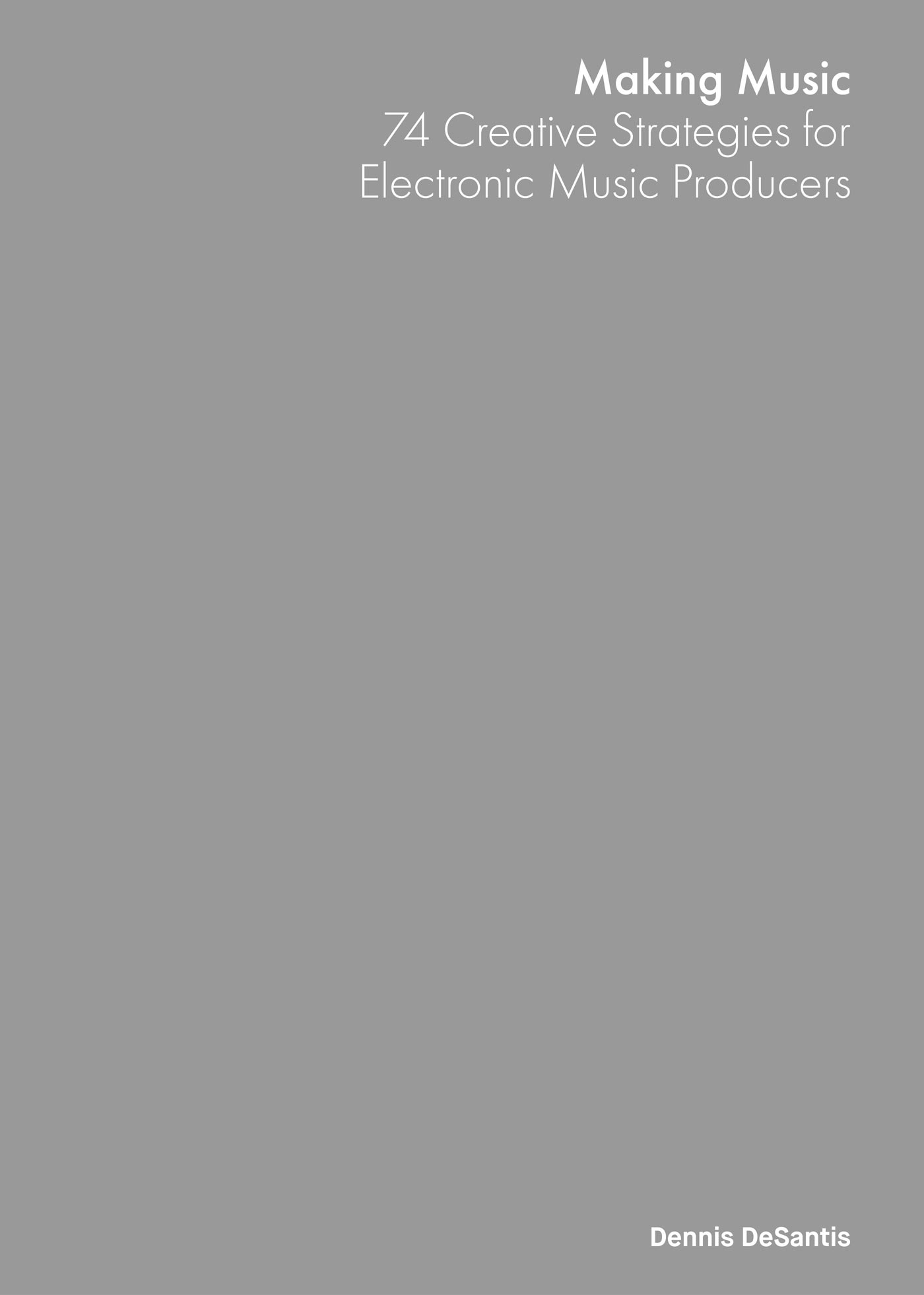
Making Music
74 Creative Strategies for Electronic Music Producers
Dennis DeSantis
For Alison and Cecilia, who inspire everything I do.
Preface
What is this book?
For many artists, nothing inspires more existential terror than actually making art. The fear that were not good enough or that we dont know enough results in untold numbers of creative crises and potential masterpieces that never get realized.
Electronic musicians used to be able to hide behind clunky, emerging technology as an excuse for inaction. But musicians today live in a golden age of tools and technology. A ninety-nine-cent smartphone app can give you the functionality of a million-dollar recording studio. A new song can be shared with the world as soon as its finished. Tutorials for every sound design or music production technique can be found through a Google search. All of these developments have served to level the playing field for musicians, making it possible for a bedroom producer to create music at a level that used to be possible only for major-label artists.
But despite all of this, making music is still hard. Why?
Making Music was written both to answer this question and to offer ways to make it easier. It presents a systematic, concrete set of patterns that you can use when making music in order to move forward.
Each pattern is presented in the following way:
- A problem is stated. A problem is a roadblock that stops you from making progress with a particular piece of music. The problems in this book are real-world situationsyoull likely recognize many of them as things that have held you back in the past. A problem might appear at the beginning (e.g., you dont know how to start), in the middle (e.g., youve created lots of material but dont know how to organize it), or near the end (e.g., you keep making changes and cant decide how to finish).
- The problem is explained in more detail via examples and (sometimes) references to other patterns.
- A solution is provided. A solution is a concrete instruction or small set of instructions that will solve the stated problem. Like the problems, the solutions are also real; if you apply the solution, the problem will be solved. Note that this requires you to actually do the solution; in most cases, reading it wont be enough to move you forward. Making Music can show you the way, but you still need to do the work.
- The solution is explained in more detail via examples and (sometimes) references to other patterns.
Who is this book for?
If you make original music using computers and youve ever found yourself struggling to complete your musical projects, Making Music was written for you. While many of the patterns discussed here can probably be modified or directly applied to other types of music-making (such as composing for rock bands or string quartets), the goal of this book is to solve the specific problems that people have when working with machines, rather than with instruments or other people.
While no prior skills are really necessary to make use of this book, Ive written it assuming you have a basic understanding of at least one digital audio workstation (DAW) or similar music production environment. No specific tool is required, and the problems and solutions discussed arent specific to the workflow of any particular piece of technology. A basic understanding of the fundamentals of musicchords, scales, and concepts of rhythmis useful but not a prerequisite.
Although it may not always be obvious, the patterns are all general enough that they can be used by musicians working with any genre of electronic music, from commercial dance music to the avant-garde. Although some of the explanations used refer to actual genres or even specific examples of music, I encourage you to read around these descriptions in order to get at the essence of the pattern so that you can apply it to your own work.
Whos the author?
I am a musician with a background in a variety of different worlds. I studied classical composition, music theory, and percussion, although these days I primarily write electronic music in the direction of house and techno. I grew up just outside of Detroit, and all of the amazing music that came from and through that city was a big influence in my early musical development. Although this book aims to be as genre-neutral as possible, its very much written from my personal perspectivethe things I talk about here are a reflection of things I actually think about and employ in my own music.
How to use this book
Think of Making Music as something like a travel guide. Theres no explicit order to the patterns, although things tend to be loosely grouped by concept. You can read and experiment with the various patterns as you need them in order to solve particular problems as they come up in your own work. Sometimes the patterns will explicitly relate to others, and I often refer to other patterns to help clarify the current one. So while its not necessary to read the whole book cover to cover, doing so will probably help you to find relationships between the various patterns and to see them as a system, rather than as isolated examples.
How this book is organized
The patterns themselves are grouped into sections based on where in the writing process a particular musical problem is likely to occur. These are:
- Problems of beginning . These are problems that prevent you from starting at all. They include problems of inspiration, problems realizing the sounds you hear in your head, etc. The solutions include exercises to develop better active listening and explorations of various ways of playing with sound, harmony, melody, rhythm, and musical form.
- Problems of progressing . These are the most common roadblocks when working and occur once youve made something but are still a long way from the end. They include problems of fatigue, problems developing and varying material, etc. The solutions include exercises to generate new material, shape song structure, and stay in the creative flow.
- Problems of finishing . These problems occur when you feel that almost (but not quite) everything is in place, but you are unable to reach a satisfactory conclusion. The solutions include ideas for creating convincing arrangements and for creating powerful endings.
Why is this book needed?
There are already many waysbooks, classes, video tutorials, software documentation, private teachersto learn about music technology and music production. Im a strong supporter of all of this, and I encourage anyone whos interested in this book to also take advantage of these resources. But almost all of them focus on the second half of the equationtechnology or productionrather than the first half: music. Making Music is an attempt to help people who are comfortable with the basics of music production at a technical level but who still find music-making to be a difficult process (which I suspect is all of us!).
Finally
This book will not teach you how to use a compressor, program a synthesizer, or make a great-sounding kick drum. Those aspects of music-making are already well covered. What it will teach you is how to make music using those tools, with a specific emphasis on solving musical problems, making progress, and (most importantly) finishing what you start.
While I hope you find Making Music inspiring, I hope even more that what inspires you is the music you make using these patterns. Making Music is not a collection of vague aphorisms. Instead, it combines motivational ideas about the philosophy and psychology of music-making with hands-on tools and techniques that musicians of all kinds can use to really get work done.
Font size:
Interval:
Bookmark:
Similar books «Making Music: 74 Creative Strategies for Electronic Music Producers»
Look at similar books to Making Music: 74 Creative Strategies for Electronic Music Producers. We have selected literature similar in name and meaning in the hope of providing readers with more options to find new, interesting, not yet read works.
Discussion, reviews of the book Making Music: 74 Creative Strategies for Electronic Music Producers and just readers' own opinions. Leave your comments, write what you think about the work, its meaning or the main characters. Specify what exactly you liked and what you didn't like, and why you think so.

